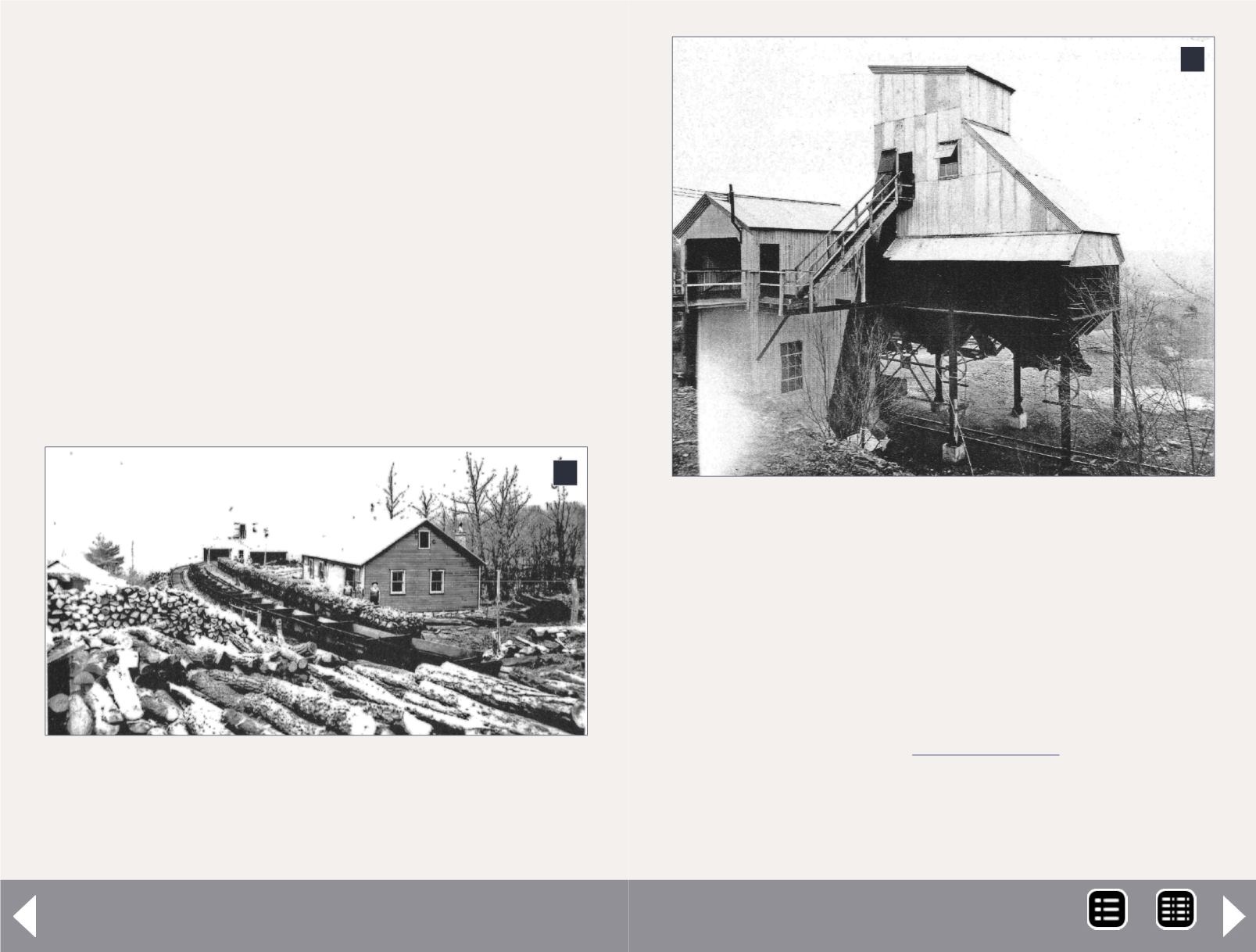
Lite and Narrow Column - 4
allow them to bring the coal from the mine to a loading dock
in Orbisonia. Their theory was that truckers would benefit by
avoiding the mountain roads in the area. This was successful
until after World War II, when the truckers quit using it. The
trend toward trucks was reflected in the design of the new tipple
constructed after the 1937 fire, with chutes for loading both
hoppers and trucks. The tipple also had coal cleaning equipment
that treated the coal shipped by truck. The end for the railroad
serving the mine came in 1948, when only ten hopper loads
were shipped from the mine. Trucks continued to serve the mine
until 1971, when the mine closed.
The village of Jollar no longer exists, because in 1978 the owner
of the land told all remaining families to vacate the town, as the
land was going to be strip-mined. They did so, and today nothing
is there. Fortunately, the strip mining never happened, leaving
2
2. Rear of tipple showing the blacksmith/car shop and
mine prop storage. Most of these mine props were cut
on the property and moved to the tipple by horse and
wagon. Miller family photo, Carolyn Lundball collection.
3
3. Rear of the tipple, showing the waste discharge
chute and previously unseen operating mechanisms
of the hoppers. Miller family photograph Carolyn
Lundball collection.
only the footprints of the structures for industrial archeologists
to study. It was from these footprints that Ron Pearson devel-
oped his plans that appeared in the
Timber Transfer
beginning in
the Fall 1996 issue. You may obtain copies of the issues contain-
ing this and other mines that Ron built from the Friends of East
Broad Top Company store at
.
Lay of the land
Coal tipples come in various shapes and sizes depending on their
output. For example, there are only two tipples in HO, that I’m
MRH-Jun 2014


